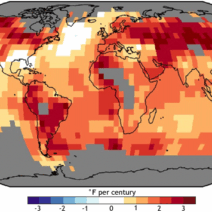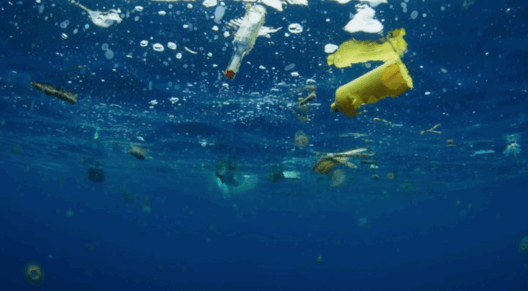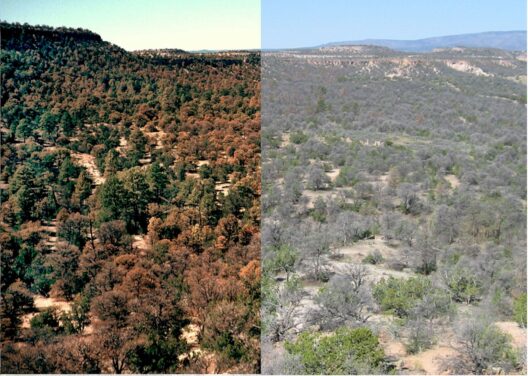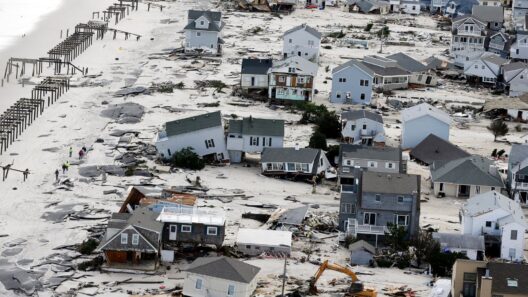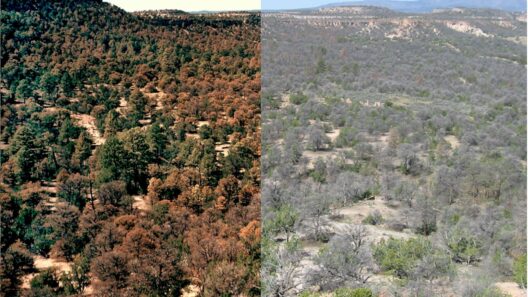Indonesia, an archipelago comprising over 17,000 islands, has long been characterized by its lush landscapes and vibrant ecosystems. Yet, in recent years, the nation’s weather patterns have become increasingly unpredictable, with erratic rainfall posing significant challenges to both the environment and the populace. The apparent caprice of monsoons and droughts belies a deeper narrative: the ramifications of global warming resonate far beyond the realm of idle speculation, becoming a stark reality that paints a sobering picture of climate change’s local impact.
In the past, the monsoon season would arrive like clockwork, heralded by heavy rains that rejuvenated crops and replenished water sources. However, climatic shifts exacerbated by global warming have led to a disconcerting alteration in this rhythm. Instead of seasonal predictability, farmers now contend with fluctuating rain patterns that can devastate their livelihoods. Anomalous wet spells followed by prolonged dry periods contribute to crop failures, jeopardizing food security and income for countless families in rural areas.
The economic implications of erratic rains in Indonesia cannot be overstated. Agriculture is a cornerstone of the national economy, with millions dependent on farming for their sustenance and livelihood. Changes in precipitation patterns manifest as reduced yields of staple crops such as rice, soybeans, and corn. In regions where agriculture relies heavily on rain-fed irrigation, the resultant decline in crop productivity not only leads to economic hardships for farmers but can also spiral into wider societal issues, including malnutrition and increased poverty.
Moreover, the environmental consequences wrought by these irregular weather changes extend to Indonesia’s rich biodiversity. The nation is renowned for its vast tropical rainforests, which serve as vital habitats for countless species. However, inconsistent rainfall can precipitate a cascade of ecological disruptions. Forest ecosystems require a delicate balance of precipitation, and when this balance is disrupted, it affects everything from plant growth to wildlife migration patterns. The loss of biodiversity, in turn, compromises ecosystem integrity, leading to the degradation of services that these ecosystems provide, such as air and water purification, climate regulation, and carbon sequestration.
One particularly alarming consequence of erratic rains is the increased susceptibility to natural disasters such as floods and landslides. The intensification of rainfall events exacerbates soil erosion, destabilizing hillsides and leading to catastrophic landslides, often with devastating human and environmental costs. Urban areas, especially those in low-lying coastal regions, are besieged by flooding, straining infrastructure and prompting emergency responses. The urban-rural divide becomes more pronounced as city dwellers cope with the immediate effects of inundation, while rural farmers face the long-term repercussions of drought and crop loss.
Furthermore, erratic rainfall contributes to the escalating risks of forest fires, particularly during dry spells. In Indonesia, the practice of slash-and-burn agriculture, often exacerbated by prolonged droughts, leads to widespread deforestation and air pollution. The dark clouds of smoke from burning forests not only contribute to climate change through greenhouse gas emissions but also inflict severe health impacts on local communities. Respiratory diseases surge, as the air quality deteriorates, creating a public health crisis that intertwines with the climate dilemma.
The social ramifications of these climatic changes echo throughout Indonesian communities. Traditional practices and cultural knowledge that have been passed down through generations face extinction as farmers are forced to adapt to new realities. Instead of relying on ancestral wisdom to navigate the seasons, many farmers are now compelled to turn to technological interventions and altered farming methods—a shift that can create a rift in cultural identity and community cohesion.
Indigenous communities, in particular, bear the brunt of these changes. Their deep-rooted connections to the land and dependence on its bounties for sustenance make them particularly vulnerable to the vagaries of climate extremes. Loss of access to traditional lands due to ecological degradation threatens their food sovereignty and cultural heritage, raising urgent questions about rights, recognition, and resilience in the face of climate-induced change.
Despite the multitude of challenges, there exists a glimmer of hope. Grassroots movements across Indonesia are mobilizing to combat climate change and its local effects. Farmers are banding together to share resources, adapt sustainable agricultural practices, and enhance resilience. Community-led reforestation programs are gaining momentum, with an emphasis on restoring degraded lands as a means of mitigating the impacts of extreme weather patterns. The integration of traditional ecological knowledge with modern science presents a pathway toward sustainable living and environmental stewardship.
Policy interventions also play a crucial role in addressing the deleterious impacts of erratic rains. Comprehensive climate adaptation strategies must become a priority for the government. Investments in resilient infrastructure, disaster preparedness, and water management systems can mitigate the adverse effects of climate change while supporting vulnerable communities. International collaborations and funding can further bolster efforts in preserving Indonesia’s unique ecosystems, ensuring that the rich tapestry of biodiversity continues to thrive amid the challenges posed by global warming.
In conclusion, the erratic rains of Indonesia illustrate the complex interplay between global warming and local realities. As weather patterns grow increasingly unpredictable, the repercussions are felt across economic, ecological, and social spectra. However, through collective action, innovative practices, and robust policy frameworks, there is potential for Indonesia to navigate the turbulent waters of climate change while safeguarding its people, environment, and cultural heritage. The challenge is monumental, yet the resolve to foster resilience against the whims of weather can lead to a more sustainable future for all Indonesians.
